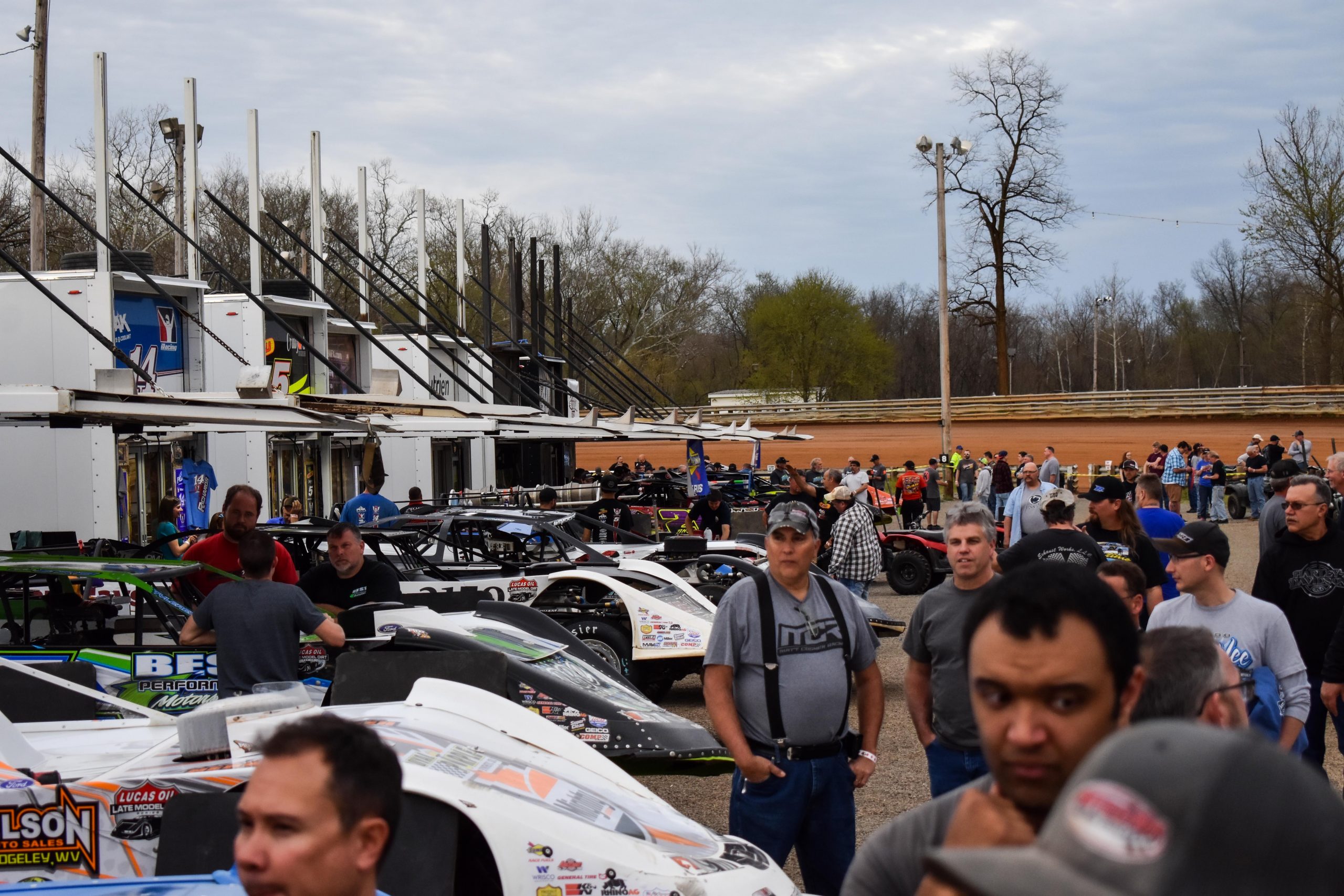On a typical Saturday night at Maryland’s motorsports facilities, a blaring voice on the public address system would welcome hundreds of fans through the gates ahead of another evening of racing action.
Some fans would head straight to the seats to find the perfect spot to watch the show; while others wandered the small midway, perusing the racing memorabilia stocked with apparel from some of the weekend warriors in the pits as well as classic items from national racing legends.
In the pits, a small line of cars would be waiting in front of a small shed for pre-race certification, while others sat on jack stands while the small crews hurried themselves with last-minute adjustments.
The rumble of racing engines warming up would sporadically drown out the music as anticipation built. The first call would come for cars to line up at the entrance gate for practice runs before heat racing began.
Soon, the quiet hum of track prep vehicles was replaced by the deafening roar of race cars launching themselves past excited onlookers and flinging themselves sideways into turn one.
The sights, smells and sounds of the local racing season where yet another facet of life put on hold when stay at home mandates from the COVID-19 pandemic brought life to a standstill last March.
“We were hoping that it was a very temporary shutdown that wasn’t going to persist throughout the year,” Lisa Plessinger, general manager of Hagerstown Speedway, told Capital News Service.
The venerable speedway saw most of its regular season and major event schedule wiped out as the shutdown dragged from weeks to months.
Those events included Monster Jam, a Lucas Oil Late Model Dirt Series event, as well as the Frank Sagi tribute race, held in honor of the longtime speedway announcer.
When professional sports eventually restarted in May last year, they did so without spectators due to social distancing guidelines, something that local tracks like Hagerstown could not do.
Sports leagues and racing organizations like NASCAR were able to return without crowds in large part due to the multibillion dollar television contracts signed between the leagues and networks like FOX and NBC.
TV deals like a $4.4 billion contract NASCAR signed in 2013 with NBC do not exist at the local level.
Despite the existence of streaming services for races, local tracks rely on entry fees from the teams as well as admissions from fans for a large part of their income.
Hagerstown Speedway attempted to operate with onlookers in a socially distanced manor, but the facility was ordered closed on July 2 for hosting fans by the Washington County Health Department.
According to the directive, the track was also cited for numerous violations, including a lack of face masks and of signage on social distancing.
Between the closure and the limited amount of races, Plessinger said that Hagerstown made about $200,000 in 2020, down more than half of the projected $800,000 for a regular year.
Royce Miller, general manager of Maryland International Raceway, a quarter-mile dragstrip in Mechanicsville, Maryland, said his facility suffered “tremendous economic downturn” due to racing without fans.
The track reconfigured many of its events by removing the professional classes that would draw spectators and hosting ameatur teams that would normally serve to pad out the weekend run times.
Millier said that the track was able to run all of its events without the pro categories, though at a cost of half their yearly revenue.
Miller declined to comment on specific dollar amounts.
Jason Miller, who promotes their largest event, the Haltech World Cup Finals, was forced to reconfigure the event into a time trial event called the Haltech Hail Mary Derby last November.
The temporary event proved successful enough to earn a stand-alone date in May of this year.
Both Plessinger and the Millers hoped to have at least some fans in the stands to avoid more debilitating financial losses like those incurred last season.
Their hopes were answered on March 9 when Gov. Larry Hogan, R, announced the repeal of many capacity limits on businesses, including the state’s motorsports facilities.
Large outdoor sports facilities, including Hagerstown Speedway and Maryland International Raceway, could open to fans at half capacity, though in a socially distanced manner, including masks.
Plessinger said that extra ushers would be on hand to facilitate social distancing requirements and plenty of hand sanitizer stands would be on site.
The track would also enforce the state’s mask mandate that remains in effect.
In a statement released on Facebook, Maryland International Raceway said “We are excited about having spectators back at MDIR and we cannot wait to see you all soon!”
The track reiterated in their statement that social distancing guidelines would remain in place.

